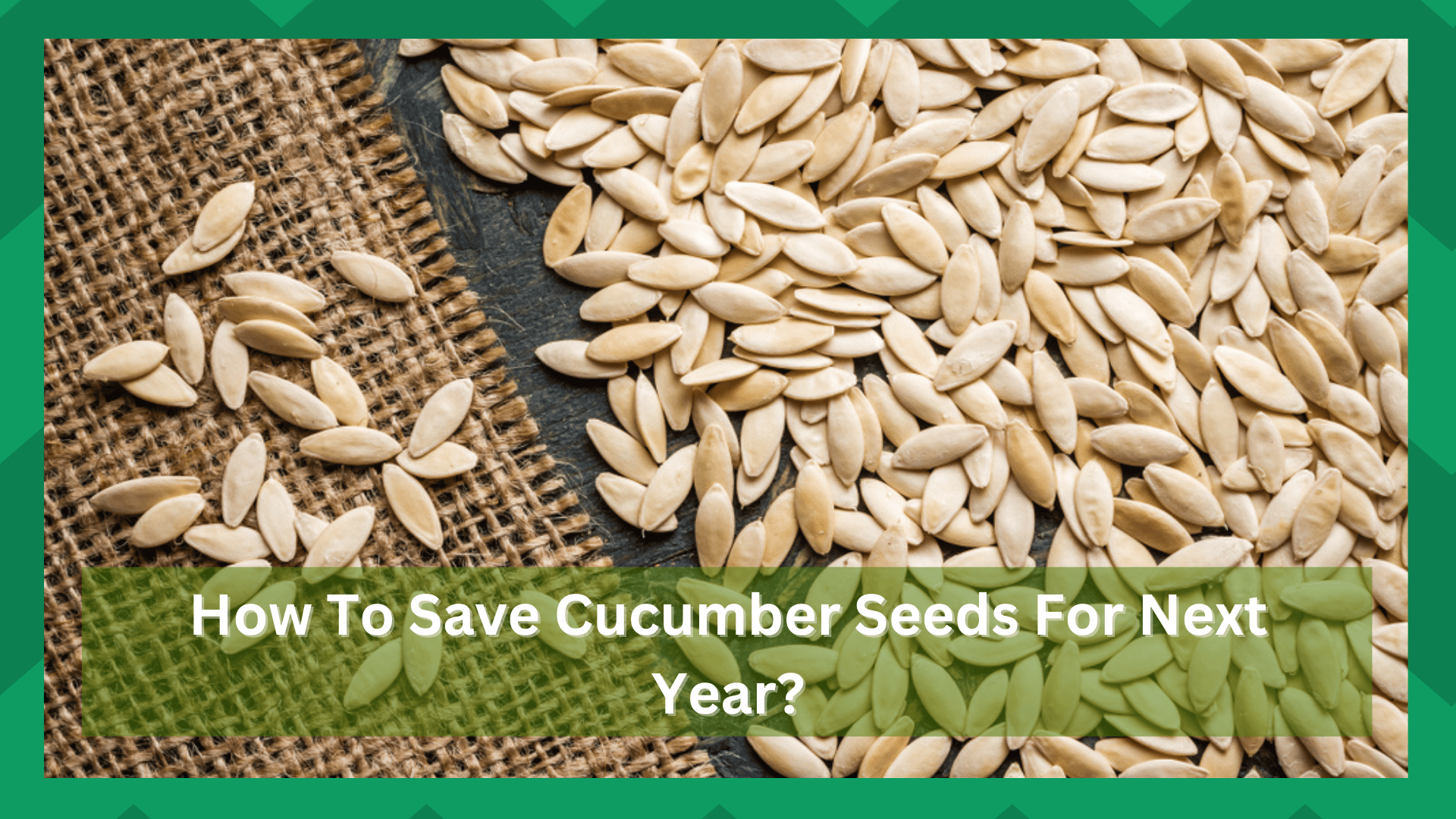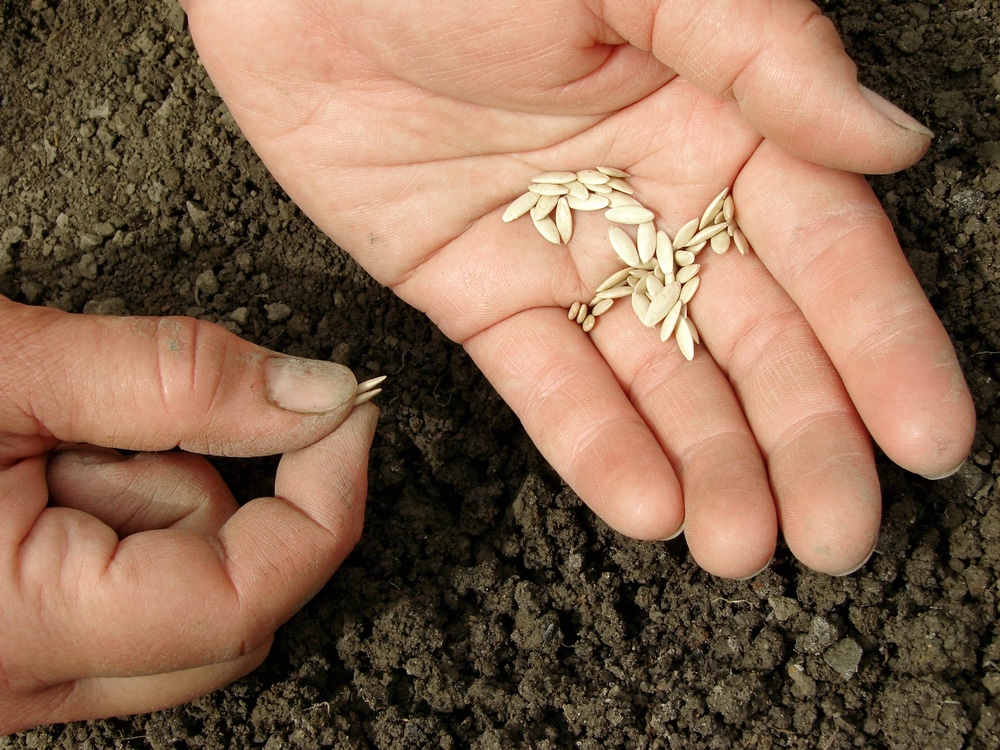
Who does not know about cucumbers? It is one of the most eaten veggies all around the world. People love its flavor, and it comes with tons of benefits.
Due to too many requirements for cucumber everywhere, it is better to store the cucumber seeds so that you can harvest them when you want. However, many have questions about “how to save cucumber seeds for next year.”
This is because saving the seeds requires learning techniques for better preservation. Therefore, our article will provide a beginner’s guide on saving cucumber seeds for next year. Let’s get right into it.
How To Save Cucumber Seeds For Next Year?
Saving cucumber seeds for the next year’s planting is a great way to ensure a strong harvest and save money on purchasing new seed packets.
Knowing how to collect and store cucumber seeds properly will increase your chances of having a successful crop the following season.
Step One: Selecting the Right Seeds
The first step in saving cucumber seeds is selecting the best ones from your crop. Choose ripe fruits at least slightly past their peak, as these will likely contain mature, viable seeds.
Cut open the cucumber and scoop the seeds with a spoon; discard any immature or underdeveloped seeds.
Step Two: Cleaning the Seeds
Once you have collected the seeds, clean them thoroughly before storing them. Place the seeds in a bowl and fill it with cold water. Stir vigorously to remove any excess pulp or debris from the seed coatings.
Discard any floating seeds, as these are likely immature. Once most of the debris has been removed, strain the seeds and spread them out on a paper towel to dry completely.
Step Three: Storing the Seeds
Once your cucumber seeds have dried, they will need to be stored properly to remain viable for the following year’s planting season.
Place the seeds in an airtight container and store them in a cool, dark place. The refrigerator or freezer are both suitable options, as long as the temperature stays below 50 degrees Fahrenheit.
Consider adding a silica gel packet to the container to protect your seeds from potential moisture damage.These steps will help ensure you have viable cucumber seeds for next season’s planting.
With a little effort and careful preparation, you can save money while enjoying the fruits of your labors come harvest time.
Step Four: Planting the Seeds
Once it’s time to start planting your cucumber seeds, choose the right spot for your crops. Cucumbers need sunlight and moisture to grow, so select a site with at least six hours of direct sunlight daily.
Additionally, cucumbers prefer slightly acidic soil with a pH between 5.5-7.0. Before planting, mix in some aged compost or manure to give the soil a nutrient boost.
To maximize your chances of a successful cucumber crop:
- Wait until all danger of frost has passed and soil temperatures have reached at least 65 degrees Fahrenheit.
- Plant the seeds 1-2 inches deep in rows spaced 18-24 inches apart.
- Keep the soil evenly moist but not soggy while they are germinating.
Once the plants have sprouted and are established, mulch around them to retain moisture and suppress weeds, with some effort and luck, you’ll be harvesting delicious cucumbers soon!
Step Five: Enjoying the Harvest
Nothing compares to the fresh taste of homegrown cucumbers! Depending on the variety, cucumbers can be harvested when their skins are still green and tender or ripened to a deep yellow-green.
Keep an eye out for any signs of disease or pests, as these can quickly ruin your crop. To harvest your cucumbers, cut them from the vine with scissors or pruning shears.
We’ll go over a few detailed steps that require more attention to achieve proper storage results.
- Isolation Of The Plant.
The first step is isolating your plant—the plant you choose to separate the seeds from plays a vital role in the process. The traits of the parent plant will be transferred to the new plant that will grow from the seeds.
Therefore, make sure you choose a plant rich in color, and its fruits have a sweet taste. Also, make sure that you choose a female plant for the process.
This can be done by observing the tiny structure at the bottom of the flower. It may have a shape of a tiny cucumber.
- Hand Pollination Of The Flowers.
Once the plant has been chosen and isolated from the other plants, the next step is hand pollination of the flowers. Collect the pollen from a male cucumber flower. This can be done with the help of a small brush.
Next, place the pollen on the stigma of the female cucumber plant’s flower. Separate the plant until the flower has taken the shape of ripe fruit.
- Separating The Seeds.
When the cucumber has grown to maturity, and it’s finally time to harvest, make sure that the cucumber you choose is free from any disease. Also, check if it is fully matured or not. Then take the cucumber and take it inside.
Cut the cucumber into pieces. Ensure that you cut the cucumber length-wise to reveal its inner seeds. Scoop out all the pulp along with the seeds. Put the pulp into a bowl containing water. Leave it for three days.
- Clean And Store The Seeds.
The final step is to clean and store the seeds. Separate the seeds from the water and other remains. Dry the seeds properly.
You can use a paper towel for this purpose. Once the seeds are completely dry, store them in an airtight container and place them in your refrigerator.
Use the wet method of harvesting and saving cucumber seeds.
- Harvesting: To collect the most viable cucumber seeds, wait until the cucumber is fully ripe on the vine before harvesting it. Ripe cucumbers generally have a waxy sheen and a deeper color than immature fruits. When picking the cucumber, be careful not to break off any seeds.
- Washing:Rinse the cucumber and then cut it in half length-wise. Use your finger or a spoon to scoop the pulp and seeds from each side. Please place them in a bowl of cool water to help remove any sticky residue from the pulp.
- Straining:After washing, strain the seeds from the pulp by placing a colander over a bowl and pouring everything into it. Use your finger or spoon to separate the seeds from the rest of the material.
- Fermenting:To help prevent diseases, fungi, and other contaminants that may have been present on the cucumber skin, ferment the seeds. Add enough water to submerge the seeds, then cover and let sit for 2-3 days at room temperature. Stir twice daily to ensure that any bad seeds and debris float to the surface. Then skim them off with a spoon and discard them.
- Rinsing:After fermenting, rinse the cucumber seed one last time in cool water.
- Drying: Spread the seeds onto a paper towel or newspaper and allow them to dry for 4-7 days in a warm, well-ventilated area. Once the cucumber seeds are completely dry and brittle, they’re ready to be stored until you need them next season.
- Storage:Place the cucumber seeds into an airtight container or a sealed plastic bag. Keep the seeds in a cool, dark place, and they should remain viable for up to three years. That’s it! You now have cucumber seeds that you can use for planting next season. Enjoy your homegrown cucumbers!
Cucumbers are one of the most convenient vegetables to grow, and saving their seeds is a great way to ensure that you have plenty of homegrown cucumbers for your garden next season.
Using the wet method of harvesting and storing cucumber seeds, you can save viable seeds for up to three years.
Follow these simple steps to harvest and store cucumber seeds successfully: Harvesting, washing, straining, fermenting, rinsing, drying and storage.
With these steps, you can be sure that your cucumber seeds will remain viable for planting next season. Enjoy the delicious fruits of your labor!
With a little preparation and effort, you can ensure that you have plenty of cucumbers to enjoy in your garden every summer.
How to prevent cucumber seeds from getting spoiled?
Cucumber seeds can be saved for planting in the following year if they are handled properly. Proper storage and handling of cucumber seeds help to prevent spoilage and ensure a successful germination rate.
Steps to consider when storing cucumber seeds include proper drying, cleaning, packaging, and temperature control. Follow these steps to ensure your cucumber seeds stay viable and be ready for planting next season.
The Bottom Line
We have provided a step-by-step guide to help you understand how to save cucumber seeds for next year. If you cannot save the seeds so they can be used next year, you can buy the cucumber seeds at any nearby farm.


